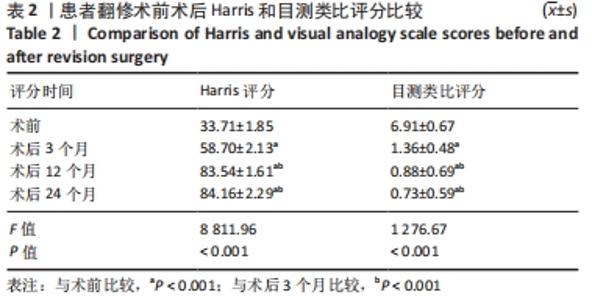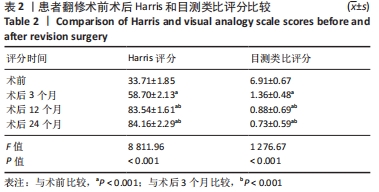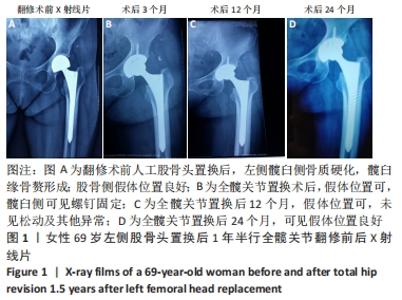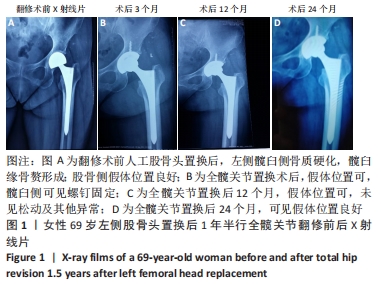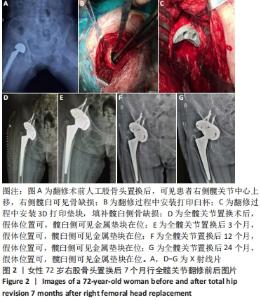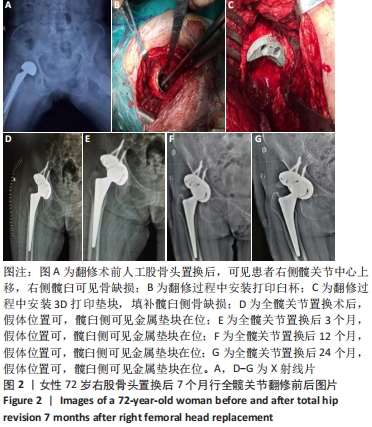[1] Lindholm RV, Puranen J, Kinnunen P. The Moore vitallium femoral head prosthesis in fracture of the femoral neck. Acta Orthop Scand. 1976; 47:70-78.
[2] Jeffery T, Ong TJ. Femoral head measurement in hemiarthroplasty: assessment of interobserver error using 3 measuring systems. Injury. 2000; 31(3):135-138.
[3] 谢成,朱成栋,乔高山,等.SuperPATH微创入路人工股骨头置换术治疗高龄股骨颈骨折的早期疗效评价[J].生物骨科材料与临床研究,2020, 17(1):63-66.
[4] Schiavi P, Pogliacomi F, Colombo M, et al. Acetabular erosion following bipolar hemiarthroplasty: A Role for the size of femoral head?.Injury. 2019;50 Suppl 4:S21-S25.
[5] Hansson S, Bülow E, Garland A, et al. More hip complications after total hip arthroplasty than after hemi-arthroplasty as hip fracture treatment: Analysis of 5,815 matched pairs in the Swedish Hip Arthroplasty Register. Acta Orthop. 2020;91(2):133-138.
[6] 王学斌,庞清江,余霄.人工股骨头置换术中置入不同直径假体球头的有限元分析[J].中国骨伤,2020,33(6):558-563.
[7] Jiang Wz, Xiao J, Chen B, et al. Joint motion of bipolar hemiarthroplasty in routine hip functional movements: a dynamic motion study. BMC Musculoskelet Disord. 2020;21(1):731.
[8] Attarilar S, Ebrahimi M, Djavanroodi F, et al. 3D Printing Technologies in Metallic Implants: A Thematic Review on the Techniques and Procedures. Int J Bioprint. 2020;7(1):306.
[9] Spece H, Ouellette ES, Jones OL, et al. Fretting Corrosion, Third-Body Polyethylene Damage, and Cup Positioning in Primary vs Revision Dual Mobility Total Hip Arthroplasty. J Arthroplasty. 2021;36(7S):S80-S87.
[10] 王秋霏,顾叶,彭育沁,等.人工假体磨损颗粒作用下Wnt/β-catenin信号通路对成骨细胞的影响[J].中国组织工程研究,2021,25(24):3894-3901.
[11] Chiron P, Murgier J, Reina N. Reduced blood loss with ligation of medial circumflex pedicle during total hip arthroplasty with minimally invasive posterior approach. Orthop Traumatol Surg Res. 2014;100(2):237-238.
[12] 韩冰,刘宏滨,张传开, 等.人工股骨头置换与股骨近端防旋髓内钉治疗高龄外侧壁危险型股骨转子间骨折的比较[J].中国组织工程研究, 2020,24(3):329-334.
[13] 李之琛, 卢伟杰, 赵杰, 等. 骨水泥聚乙烯内衬固定技术应用于髋关节翻修的疗效研究[J]. 中国修复重建外科杂志,2018,32(9):1157-1161.
[14] Keating JF, GrantA, Masson M, et al. Randomized comparision of reduction and fixation, bipolar hemi-arthroplasty, and total hip arthroplasty. Treatment of displaced intracapsular hip fractures in healthy older patients. J Bone Joint Surg Am. 2006;88(2):249-260.
[15] Luo X, He S, Li Z, et al. Systematic review of cemented versus uncemented hernia-rthroplasty for displaced femoral neck fractures in older patients. Arch Orthop Trauma Surg. 2012;132(4):455-463.
[16] 骆晓飞,王金良,王少华, 等.金属垫块修复PaproskyⅢ型髋臼骨缺损在人工髋关节翻修术中的应用[J].中医正骨,2020,32(7):43-46.
[17] LACHIEWICZ PF, O’DELL JA. Tantalum components in difficult acetabular revisions have good survival at 5 to 10 years: longer term followup of a previous report. Clin Orthop Relat Res. 2018;476(2):336-342.
[18] 吴毅华,卢长巍,梁仁,等.3D打印技术在PaproskyⅢ型髋臼翻修中的临床应用[J].河北医学,2020,26(12):2036-2040.
|
